Wafaa Bilal's "Virtual Jihadi"
An art installation that Rensselaer Polytechnic Institute slammed shut on Thursday will open this week at The Sanctuary for Independent Media, with a reception for Iraqi-born digital media artist Wafaa Bilal at 6 PM on Monday (3/10) followed at 7 PM by a presentation about his “Virtual Jihadi” project.Monday’s opening will be the centerpiece of a month-long celebration of art, freedom and democracy at the Sanctuary, which will include appearances by culture jammers The Yes Men, film maker Pam Yates and the Critical Art Ensemble’s Professor Steve Kurtz.
The art installation by Wafaa Bilal consists of a virtual avatar of him in the costume of a suicide bomber. The avatar is placed in an existing first-person shooter video game called “The Night of Bush Capturing.” That game is in turn a spoof of the game “Quest for Saddam.” Both of the original games allow the player to roam the streets indiscriminately killing civilians as they hunt for the US President and the former Iraqi dictator. Bilal’s alteration of the games reveals the tragic by-product of the clash between these two extremist visions: civilians caught in the cross-fire become easy recruits for more extremism, and fodder for an even more violent future.
Check The Sanctuary’s webpage for more information about the exhibit and links to press coverage of the controversy in the Washington Post, NY Newsday and the Times Union.
Hope to see you soon! –Your Friends at The Sanctuary for Independent Media
PS More about Waafa Billal: Wafaa Bilal was named 2007 Chicagoan of the Year by the Chicago Tribune, which wrote, “No artwork created in Chicago in 2007 received as much attention as Wafaa Bilal’s ‘Domestic Tension,’ an interactive performance piece that subjected the Iraqiborn artist to a month of bombardment by paintballs from Internet viewers.”
According to Wafaa Bilal:
“My art is most influenced by the pain and suffering of growing up under Sadaam Hussein’s repressive rule from 1968 to the recent “Iraqi Freedom War.” I experienced violence on a daily basis, and visions of death and terror together with the anguish to the Iraqi people are irrevocably etched in my memory. My generation in Iraq is defined by decades of war. Since coming to the United States I have also seen great injustice and suffering in the forms of poverty, racism, and many other forms of discrimination and hatred. From this point of departure, through art I strive to uncover an overarching human condition while creating a space for provocation, dialogue, and contemplation. As my friend and colleague Gregg Bordowitz has written, when we are exposed to violence on a daily basis, how can we, as political artists, convey this experience clearly to the viewer and leave a lasting impression that is fresh and solid in its conclusions, not cliché?A constant negotiation must take place in order to embrace the aesthetic pleasure of the image’s surface, which is so necessary to capture the imagination, and to convey the aesthetic pain of the content. The failure of this negotiation can easily result in the alienation of the viewer, while a successful negotiation may result in active engagement and an opening of the viewer’s perspective. While I do not wish to impose narrow interpretations of my work but struggle to create complex and muli-dimensional images, I also do not feel we currently have the privilege to enjoy art purely as aesthetic pleasure. It is a misconception that art has ever been pure; historically it has been a means of expressing personal and societal realities and interpretations. We must actively employ the tension and incongruence produced by the coexistence of aesthetic pleasure and aesthetic pain to attract and jolt the viewer in a thoughtprovoking manner. As an active player in society and as both educator and agitator, the artist must keep pushing these boundaries.
The photographs I create are highly symbolic, “hyper-real” landscapes, landscapes of possibilities existing just beyond reality, expressing emotions and conditions that permeate reality. They equally could be called “interior landscapes,” representative of the psychology of human suffering in a society ruled by oppression, domination, and fear. Figures exist in equal balance with the landscapes, the images drawing their complexity from this dramatic polar tension. Within the frame, time and place loses specificity to become transcendent and expressive of a broader human condition.
Video installations provide another level of impact besides the content of the image: we observe movement, a physical language the body understands. I play with the viewer’s presence and engagement or lack thereof, allowing this to directly impact the action and outcome of the piece. As the viewer may be far removed from the conflict addressed within the work, it is important to communicate to the viewer through a recognizable visual language, and so I filter the subject through historical and psychological contexts of the subject’s specific locale. The frame acts as a historical window to the past, while the moving image exemplifies a persistent-present, a current condition influenced by internal or external circumstances that inhibit change. The moment something is done to change a situation, the persistent-present becomes a progressive present where change can occur.
My memories of Iraq and my disenchantment with politics have not left me cynical, nor drained of hope for humanity. On the contrary, I am filled with belief in the power of the people to control their own destinies, and I continue to believe in social justice. I hope to foster a sense of self-empowerment in my audience and to counter the sense of powerlessness people feel in the face of inhumanity.”
Wafaa Bilal was born in Iraq on June 10, 1966. Because a member of his family had been accused of disloyalty to his country, Wafaa was denied the opportunity to pursue his dream of being an artist. Instead, he was to attend college to major in geography. While in college, he continued to pursue his art and was arrested and tortur
ed for his political art work against Sadaam Hussein. Shortly after the Gulf War, Wafaa was inspired by President Bush’s message to the Iraqi citizens that if they attempted to overthrow Sadaam, the US would stand behind them. He became involved in organizing opposition to the government and was scheduled for arrest and execution when he escaped into Kuwait. There he was accused of being a spy and was close to being shot when his student ID convinced them he told the truth. Wafaa was sent to a refugee camp on the Kuwaiti border. In the camp, people laughed when rather than accept life in a tent he began forming brick that he dried in the sun and fashioned into a home. The adobe served a practical purpose, for it provided relative safety from abduction by Kuwaiti soldiers who sneaked into tents in the middle of the night to kidnap young people for sale to Iraqi soldiers who tortured, raped and executed them or the Turkish soldiers themselves would rape and kill them.For two years, Wafaa lived in limbo not knowing if each day would be his last. Still Wafaa worked to improve his art, cleaning toilets in the camp to earn the money for art supplies, buying supplies for children for art therapy to help them to work through the horrors witnessed. His experiences developed within him an abhorrence of violence and oppression and strengthened his inner resolve. In 1992, Wafaa came to the United States and took classes to learn English. Then, he began art studies at the University of New Mexico where he excelled. His art is of a political nature that speaks to oppression of the human spirit, including that of women who are bound by the rules of culture. He has won many awards for his art as well as a scholarship to the Chicago Institute of Art for post graduate study. He is now teaching at that institution.
In addition, Wafaa travels to give lectures on the oppressive nature of Sadaam’s regime in the hope of informing people of the complexities of the situation as well as the atrocities committed and the importance of nonviolent means of ending conflict. It has been 14 years since he was last able to see his mother and younger siblings. He speaks to them on the phone to hear how they flee from one war torn city to another in an effort to find safety. His 21 year-old brother who was staunchly apolitical lost his life to stray American gunfire. His father died when his health deteriorated after the death of his youngest son.



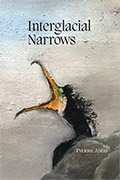 “Interglacial Narrows (Poems 1915-2021)” Contra Mundum Press
“Interglacial Narrows (Poems 1915-2021)” Contra Mundum Press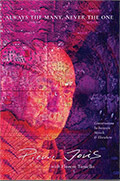 “Always the Many, Never the One: Conversations In-between, with Florent Toniello” Contra Mundum Press
“Always the Many, Never the One: Conversations In-between, with Florent Toniello” Contra Mundum Press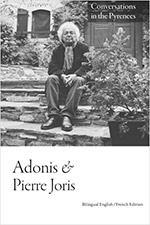 “Conversations in the Pyrenees”
“Conversations in the Pyrenees”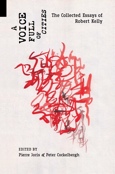 “A Voice Full of Cities: The Collected Essays of Robert Kelly.” Edited by Pierre Joris & Peter Cockelbergh
“A Voice Full of Cities: The Collected Essays of Robert Kelly.” Edited by Pierre Joris & Peter Cockelbergh “An American Suite” (Poems) —Inpatient Press
“An American Suite” (Poems) —Inpatient Press “Arabia (not so) Deserta” : Essays on Maghrebi & Mashreqi Writing & Culture
“Arabia (not so) Deserta” : Essays on Maghrebi & Mashreqi Writing & Culture “Barzakh” (Poems 2000-2012)
“Barzakh” (Poems 2000-2012) “Fox-trails, -tales & -trots”
“Fox-trails, -tales & -trots”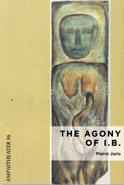 “The Agony of I.B.” — A play. Editions PHI & TNL 2016
“The Agony of I.B.” — A play. Editions PHI & TNL 2016 “The Book of U / Le livre des cormorans”
“The Book of U / Le livre des cormorans”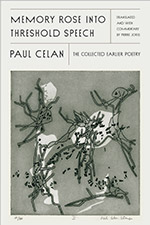 “Memory Rose Into Threshold Speech: The Collected Earlier Poetry of Paul Celan”
“Memory Rose Into Threshold Speech: The Collected Earlier Poetry of Paul Celan”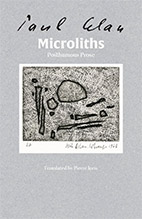 “Paul Celan, Microliths They Are, Little Stones”
“Paul Celan, Microliths They Are, Little Stones”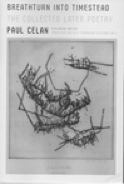 “Paul Celan: Breathturn into Timestead-The Collected Later Poetry.” Translated & with commentary by Pierre Joris. Farrar, Straus & Giroux
“Paul Celan: Breathturn into Timestead-The Collected Later Poetry.” Translated & with commentary by Pierre Joris. Farrar, Straus & Giroux